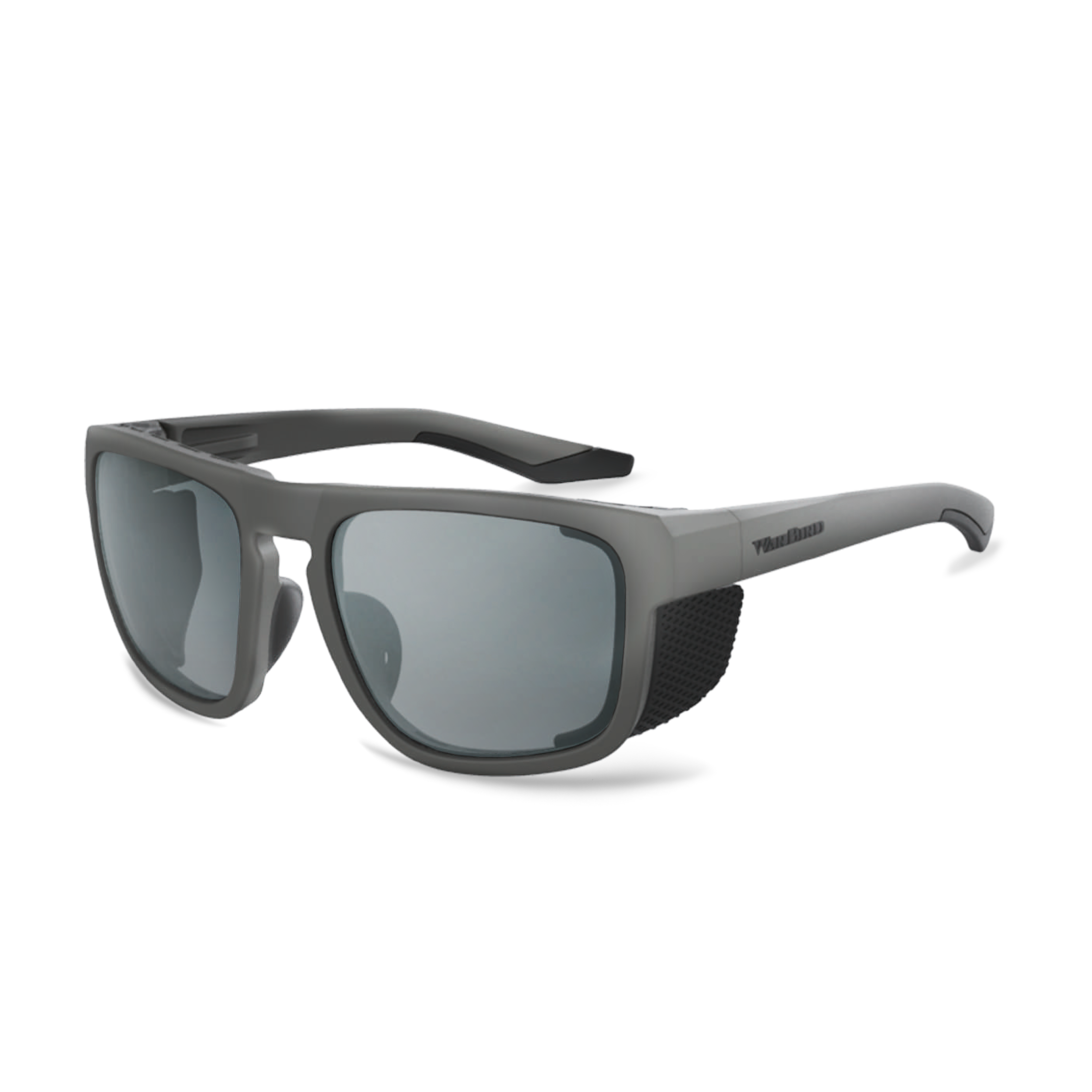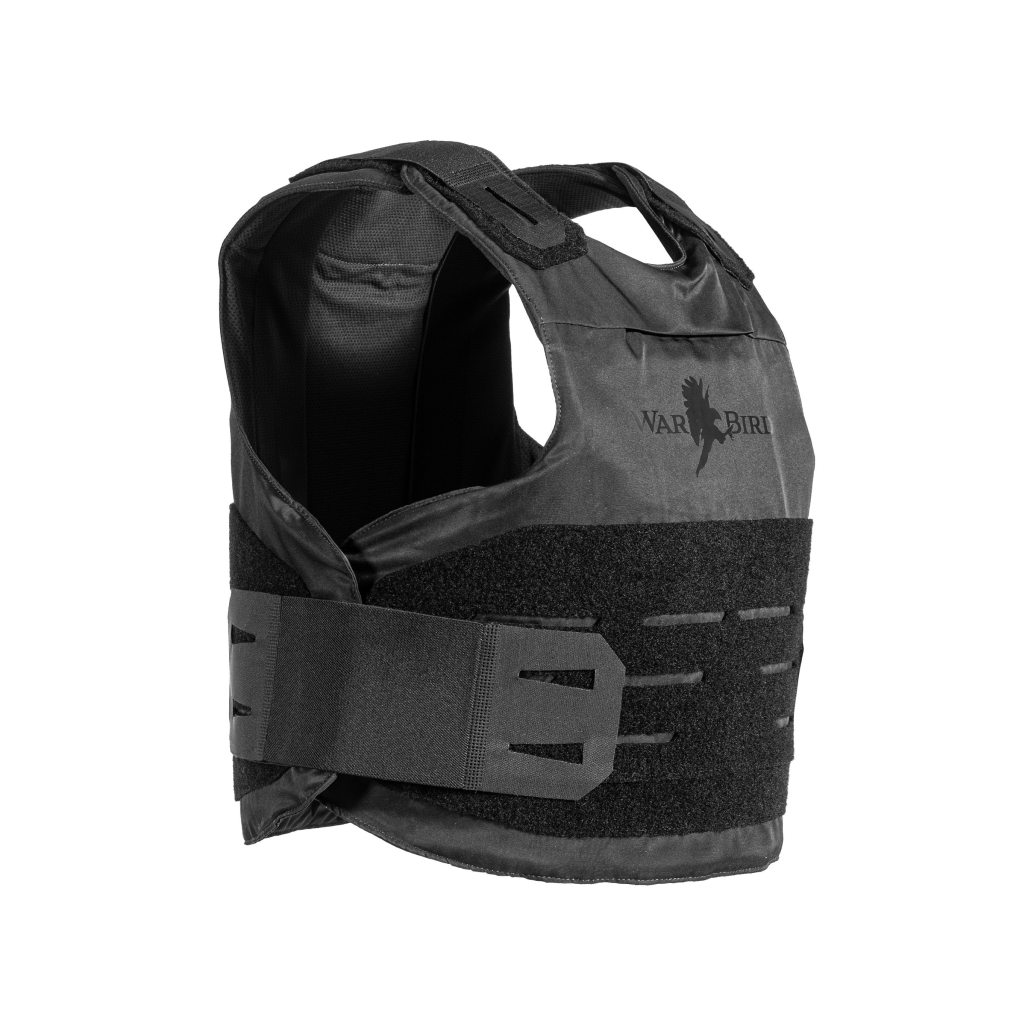When it comes to a lifesaving product like body armor, you want to be darn sure it’s going to do the job it’s supposed to do. The last thing you need is to get caught wearing some unreliable piece of garbage at that critical moment when dependability matters most.
For body armor designers, one of the best test methods to determine reliable performance is known as the V-50 Ballistic Limit test. The V-50 is essentially the statistical breaking point of the body armor. This function is measured in terms of velocity hence the “V” in V-50. The V-50 calculation is the velocity at which 50% of the time bullets will penetrate and 50% of the time they will not, hence the term “V-50”
As moronic as it sounds, in this test, we purposefully shoot holes in body armor. While that may seem strange, the point is to push the vest to its failure point. This method is not only useful but necessary for many reasons. It’s also a stark reminder that no body amor is bullet “proof.”
So why is it important to understand the point at which the armor fails and bullets penetrate the vest? By comparing the failure points of two different vest designs we can determine reliability and a good measure of not only if the vest stops bullets but how well it does it.
Let’s say you have two vests, both meeting the latest NIJ standard. By that alone they’re safe to wear, but which one has the higher penetration resistance? What if you have a brand-new vest and a vest that is 5-years old? Will the age effect the performance? What if you’re evaluating a new material… how will it compare to the old material?
Comparing products by stopping bullets at street velocities doesn’t really work. If they both stop the bullet, how do you know which product stopped the bullet better? Sure, there are a few tricks we have up our sleeves for that, but it’s much more reliable if we push the vest to its failure point and determine it’s “V-50.” By measuring the actual failure point or V50, true comparisons can be made.

A block of Roma plastalina clay as used during NIJ testing protocol. Body armor is mounted to it and shot at high velocities in an attempt to determine the V-50. In this example, there were eight stops and four complete penetrations of the armor.
How do you calculate V-50?
Like any good scientific test, we start by controlling all the test variables. Aspects such as the test medium, bullet construction, shot location, velocity, and rotational speed all must be tightly managed. Even laboratory conditions like air temperature and humidity are closely monitored. We also need to make sure we’re shooting a smooth, flat panel each time so readjusting the armor between shots becomes necessary. When conducting V50 testing, it is imperative that each impact event (both the bullet and armor sample) be as similar as possible. It may also be important to mention that specialized laboratory equipment must be used to perform this test. Because we are examining the breaking point of a personal body armor, we will be shooting bullets much faster and at higher pressures than could ever be achieved from a conventional firearm on the street.
Once we have our controls in place, we begin shooting our test samples while carefully recording the bullet velocities. We start with a relatively low “reference” velocity similar to what you might find on the street out of your average firearm. After each shot, we systematically increase the velocity until we get a penetration of the vest. If the first shot is a “stop,” we increase the velocity by 100 feet per second (fps). Second shot also a stop? Let’s go up another 100 fps, and so on, until we get a “penetration.” But we don’t stop there (pun intended). Now, we’re going to reverse our velocity and bring it down 75 fps. We’ll fire away until we get another stop. After that we go the other direction once again and increase velocity by 50 fps until we get another penetration. This process continues for a total of twelve shots. Using this methodology we are slowly exploring the failure point of the armor and gathering important statistical data.
At the end of the test, we’re left with a lot of data we can crunch to find the statistically derived mean of the penetrations and stops. We can determine when a bullet fired at a specific velocity has a 50% chance of stopping and a 50% chance of penetrating. This is our V-50. The “V” is for velocity and the “50” is for the 50th percentile.

In Exhibit 1 we see a V-50 test with a .44 Mag. 240 grain SJHP on two panels, A and B. Both were shot 12 times for a total of 24 shots. In total we had 8 penetrations at the following velocities: 1704, 1726, 1777, 1780, 1792, 1794, 1831, and 1844. We also had 16 stops, but we’ll discard a few of the lowly outliers. Our stop velocities include: 1654, 1676, 1685, 1691, 1731, 1739, 1746, and 1752. When quickly scanning this data, we see penetrations commonly occur in the upper 1700’s and 1800’s, while stops are more frequented in the mid-1700’s and below. Without even running a calculation we could probably guess a velocity where it would be a flip of a coin as to whether the bullet would penetrate or stop.
You may notice that the velocities don’t exactly correlate to the starting reference velocity target of 1340. For instance, the first shots on the two panels were 1332 and 1324 fps. Also, the increasing and decreasing velocity changes aren’t exactly 100, 75 and 50 fps. That’s b/c the great ballisticians that conduct these tests are actually hand loading each round, meticulously counting each grain of powder, in hopes of achieving the exact targeted velocity. Even with such great care, it’s near impossible to hit those targeted velocities so the generally acceptable range is + or – 30 fps. But hey, that’s why some of us refer to this science as BULL-istics…
Range of Results
When calculating V50 it is important that the results, penetrations, and non-penetrations fall within a specific range, usually within 125 fps fps or 150 fps. Think about it this way, if we shoot a piece of cardboard with a 9mm handgun. A velocity of about 1200 fps the bullet would of course penetrate. But then we were able to slow that 9mm bullet to only 10 fps and the bullet then simply bounces of our cardboard sample. With a complete penetration at 1200 fps and a “stop” at 10 fps, does that mean that the V50 is 605 fps? Obviously not. This is the importance of the range of results, and those results chosen for V50 calculations should be within a narrow velocity range (125-150 fps)
Range of Mixed Results
One of the more interesting caveats of a V-50 test is that we often end up with a “range of mixed results.” In this test our highest stop was 1752, but our lowest penetration was just 1704. This represents a range of 48 fps where we could either get a stop or a penetration. It’s sort of a gray zone and indicates were very close to that magic V-50 number. Sure enough, our V-50 in this example comes to 1744 fps.
Importance of the “Low Complete” (or, the Lowest Penetrating Velocity)
Up until now we’ve used simple terms like “penetration” and “stop” to define the results. Why? Well because it makes sense. But the government being what it is, has redefined these terms which are now referred to as “partial penetration” or “complete penetration.” Most bullets that hit armor penetrate at least one or two layers, therefore “partially” penetrating the armor. A bullet that goes through all the layers? Well, that “completely penetrated” the armor. If you ever get the chance to hang around any of the industry’s labs, get used to abbreviated slang terms of “partial” and “complete” being thrown around.
The Low Complete is one of the key numbers we look for when we evaluate armor performance. We really like to see armor that has a low complete relatively close to its V50 value. This tells us that the armor has a tight statistical performance. In other words, it has a narrow range where you might see mixed results.
Take Flight with the WarBird SkyFlex Level IIIA
The data in our example comes from the certification testing of our WarBird SkyFlex IIIA ballistic system. Specifically, we showed the “conditioned” armor test data. Prior to testing, these vests went through an accelerated aging process where the vests were tumbled at 149° F and 80% relative humidity for at total of 72,000 cycles. It’s a standard part of the NIJ 0101.06 and now .07 test protocol. The goal is to make sure the products aren’t prone to any catastrophic fallout after enduring a little environmental and mechanical stress and strain.
Conditioning protocol was first introduced after Zylon, a short-lived ballistic material (only relevant in body armor from 1999 – 2005), was found to loose significant performance after only a short time of field use. In 2005 the NIJ replaced the 0101.04 standard with the “2005 Interim Requirements” which effectively banned the use of Zylon. The 0101.06 standard was released in 2008 along with its conditioning protocol component. In December of 2023, NIJ published the long awaited 0101.07 standard, details of which can be found in our blog article The Evolution of Body Armor Standards.
What does this one test tell us about the SkyFlex level IIIA?
For starters, it has very high anti-penetration performance. For conditioned armor NIJ specifies a reference velocity of 1340 fps. The SkyFlex demonstrated a V50 of 1744 and low complete of 1704. In this case our V-50 is a remarkable 404 fps over the NIJ reference velocity. Consider further that the muzzle velocity of the most prominent selling 240 gr. .44 mag rounds register between 1200 and 1300 fps. Or take it a step further and you’ll discover that much of the fastest commercial ammo only reaches velocities in the mid 1400’s. No matter what way you cut it, the penetration resistance of the SkyFlex IIIA is beyond exceptional.
If you’re in the market for body armor and comparing vests, be sure to evaluate the V50 data to determine its penetration resistance. All V-50 data on WarBird’s ballistics products are available for download on the spec sheets located on the product pages. Good luck and godspeed!












